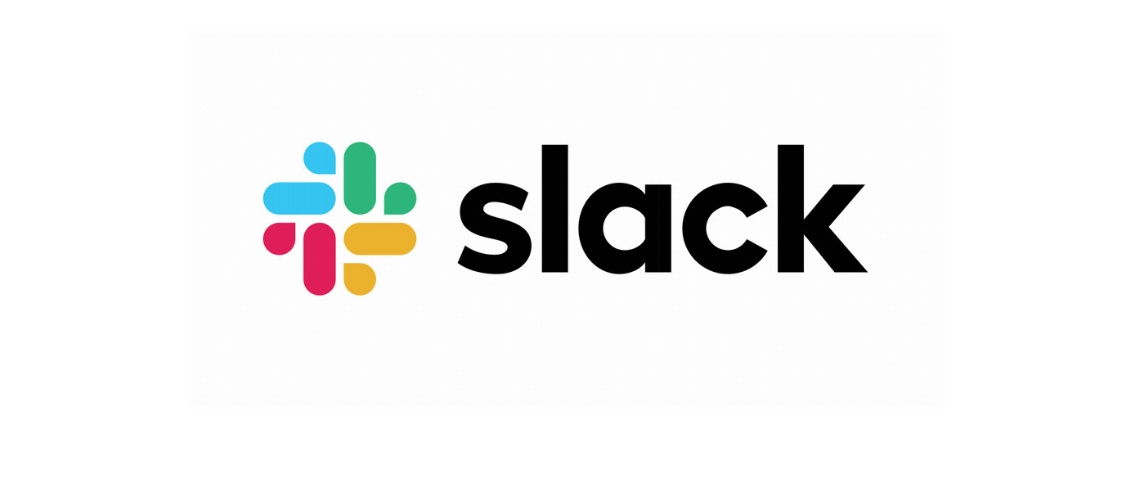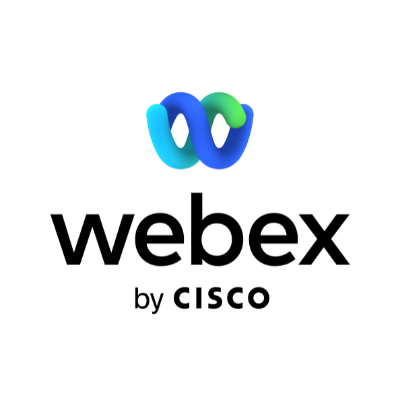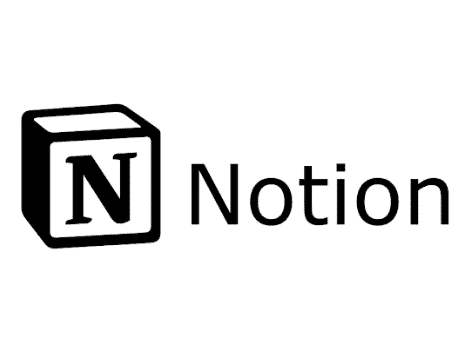- What is Microsoft Teams ?
What is Microsoft Teams and how does it work?
What are the advantages of Microsoft Teams for companies?
What are the downsides of Microsoft Teams? - Top 10 Microsoft teams alternatives for 2023
Alternative 1 : Zoom
Alternative 2 : Yammer (Viva Engage)
Alternative 3 : Slack
Alternative 4 : Google Workspace
Alternative 5 : Webex App (Cisco Jabber)
Alternative 6 : Notion
Alternative 7 : Trello
Alternative 8 : Asana
Alternative 9 : Monday.com
Alternative 10 : Wrike - How to choose the right Microsoft Teams alternative for your business?
What should you consider when choosing Microsoft Teams alternatives?
How to test and evaluate Microsoft Teams alternatives
How Powell Teams can help you work more efficiently with Microsoft Teams? - Conclusion
What is Microsoft Teams?
What is Microsoft Teams and how does it work?
Microsoft Teams is a versatile collaboration platform developed by Microsoft as part of the Microsoft 365 suite of productivity tools. Launched in 2017, it has quickly gained popularity among businesses of all sizes due to its comprehensive range of features and seamless integration with other Microsoft applications.
At its core, Microsoft Teams is designed to streamline communication and collaboration within organizations. The platform enables users to create channels for different teams, projects, or topics, facilitating organized and efficient communication. Microsoft Teams channels can be public or private, and users can join or be added to channels as needed.
Microsoft Teams also offers a wide array of collaboration tools, such as file sharing, real-time document editing, and version tracking. Users can upload and share files directly within a channel, making it easy for team members to access and collaborate on documents. Furthermore, the platform integrates with Microsoft Office applications like Word, Excel, and PowerPoint, allowing users to edit documents directly within Teams without switching between apps.
In addition to its robust messaging and collaboration features, Microsoft Teams provides comprehensive video conferencing capabilities. Users can schedule and join video meetings within the platform, with options for screen sharing, virtual backgrounds, and breakout rooms. Microsoft Teams also supports audio calls and instant messaging, making it a versatile communication tool for organizations.
To enhance its functionality further, Microsoft Teams offers a wide range of integrations with third-party applications and services. From project management tools like Trello and Asana to file storage solutions like Google Drive and Dropbox, these integrations help streamline workflows and improve overall productivity.
What are the advantages of Microsoft Teams for companies?
Microsoft Teams offers numerous benefits for businesses, making it a popular choice for organizations seeking to improve communication and collaboration. Some key advantages include:
Unified communication platform: Microsoft Teams consolidates various communication channels, such as messaging, video conferencing, and file sharing, into a single platform. This centralized approach can help reduce confusion and inefficiencies caused by using multiple tools for different purposes.
Integration with Microsoft 365: As part of the Microsoft 365 suite, Teams integrates seamlessly with other Microsoft applications, such as Outlook, OneDrive, and SharePoint. This integration enables users to work more efficiently by accessing and editing documents directly within the platform.
Customizable channels: Microsoft Teams allows users to create channels for different teams, projects, or topics, promoting organized and efficient communication. This level of customization can help teams stay focused on their work and reduce distractions.
Scalability: Microsoft Teams offers a range of plans to accommodate businesses of all sizes, from small teams to large enterprises. Its flexible pricing and features make it suitable for organizations as they grow and evolve.
Security and compliance: Microsoft Teams prioritizes security and compliance, offering features like multi-factor authentication, data encryption, and compliance with various industry standards. These measures can help protect sensitive business data and ensure organizations meet their regulatory requirements.
What are the downsides of Microsoft Teams?
Despite its numerous advantages, Microsoft Teams may not be the perfect fit for every organization. Some potential downsides to consider include:
Learning curve: Users unfamiliar with Microsoft products may experience a learning curve when adopting Microsoft Teams, as the platform’s interface and features may take some time to master.
Limited free plan: While Microsoft Teams offers a free plan, it comes with limitations on features and storage. Organizations with larger teams or more advanced requirements may need to opt for a paid plan to access the full range of capabilities.
Third-party integrations: Although Microsoft Teams supports a wide range of third-party integrations, the platform may not offer as many options as some competitors. This limitation could be a drawback for organizations that rely heavily on specific tools or services not supported by Teams.
Performance issues: Some users have reported performance issues with Microsoft Teams, such as slow loading times and occasional glitches. These problems can impact productivity and user experience, especially in larger organizations with numerous users. Microsoft announced a new version of the Teams client for PC in 2023 which is said to fix this
Dependency on Microsoft ecosystem: Microsoft Teams is closely tied to the Microsoft 365 suite of productivity tools. Organizations that do not already use Microsoft products or prefer alternative solutions may find it challenging to fully integrate Teams into their existing workflows.
Audio and video quality: While Microsoft Teams generally provides a solid video conferencing experience, some users have reported issues with audio and video quality during meetings. These issues can impact the effectiveness of remote communication and collaboration.
In conclusion, while Microsoft Teams offers a comprehensive set of features and benefits for businesses, it may not be the ideal solution for every organization. Considering the potential downsides, it is essential to evaluate your organization’s specific needs and requirements before deciding whether Microsoft Teams or an alternative platform is the best fit.By carefully weighing the pros and cons, you can ensure your organization adopts the most suitable communication and collaboration solution to maximize productivity and efficiency.
Top 10 Microsoft Teams alternatives for 2023
Microsoft Teams Alternatives #1: Zoom
Zoom is a video conferencing platform known for its high-quality video and audio, ease of use, and scalability. It offers features like screen sharing, breakout rooms, and integrations with various third-party apps, such as Google Workspace and Slack.
Pros:
- User-friendly interface: Zoom is known for its intuitive design, making it easy for users to navigate and join meetings.
- Reliable video quality: Zoom provides high-definition video and audio quality, ensuring smooth communication during meetings.
- Large meeting capacity: Zoom supports up to 1,000 video participants and 10,000 viewers in a single meeting, making it suitable for organizations of all sizes.
- Integrations: Zoom integrates with various third-party tools and services, such as Microsoft Outlook, Google Calendar, and Slack.
Cons:
- Security concerns: In the past, Zoom faced security and privacy issues, although the company has made significant improvements to address these concerns.
- Limited free plan: The free plan offers limited features and a 40-minute time limit on group meetings.
Pricing and Plans:
Zoom offers a free plan with basic features and three paid plans: Pro ($14.99/host/month), Business ($19.99/host/month), and Enterprise ($19.99/host/month with a minimum of 50 hosts). Each plan comes with different features and capacities, allowing businesses to choose the most suitable option.
Microsoft Teams Alternatives #2: Yammer (Viva Engage)
Yammer is Microsoft’s enterprise social network that allows employees to collaborate, share ideas, and stay connected. It is now part of Viva Engage, a comprehensive employee experience platform.
Pros:
- Enterprise social networking: Yammer focuses on creating a social network within your organization, fostering collaboration and communication.
- Integrations: Yammer integrates seamlessly with other Microsoft products, such as SharePoint, OneDrive, and Office 365.
- Mobile apps: Yammer offers mobile apps for iOS and Android, enabling users to stay connected on the go.
- Customizable interface: Organizations can customize the look and feel of their Yammer network to match their branding.
Cons:
- Limited standalone features: Yammer’s standalone features may not be as robust as some other Microsoft Teams alternatives.
- Adoption challenges: Some organizations may face challenges in encouraging employees to adopt Yammer as their primary communication tool.
Pricing and Plans:
Yammer is included with Microsoft 365 subscriptions, which start at $5/user/month for the Microsoft 365 Business Basic plan. Standalone Yammer plans are also available, with prices starting at $3/user/month for Yammer Basic and $5/user/month for Yammer Enterprise.(Not sure if it still exists in 2023, please put the source to check)
Microsoft Teams Alternatives #3: Slack
Slack is a popular team collaboration tool that focuses on real-time communication through channels, direct messaging, and file sharing. It also offers integrations with a wide range of third-party apps, such as Google Workspace, Trello, and Asana.
Pros:
- Intuitive interface: Slack’s clean and user-friendly interface makes it easy for users to navigate and collaborate.
- Robust integrations: Slack integrates with numerous third-party tools and services, such as Google Drive, Trello, and Zoom.
- Customizable channels: Users can create channels for different teams, projects, or topics, streamlining communication and collaboration.
- Advanced search: Slack’s powerful search functionality helps users quickly find files, messages, and content within the platform.
Cons:
- Limited free plan: Slack’s free plan comes with limitations on message history and storage, which may not be suitable for larger organizations.
- Pricing: Slack’s paid plans can be more expensive compared to other Microsoft Teams alternatives, especially for larger teams.
Pricing and Plans:
Slack offers a free plan with basic features and two paid plans: Standard ($6.67/user/month billed annually) and Plus ($12.50/user/month billed annually). Each plan comes with different features and capacities, allowing businesses to choose the most suitable option.
Microsoft Teams Alternatives #4: Google Workspace
Google Workspace is a suite of productivity and collaboration tools that includes Gmail, Google Drive, Google Docs, Google Sheets, Google Slides, Google Meet, and more. The platform offers seamless collaboration and integration across various Google services, making it a strong alternative to Microsoft Teams for organizations that already rely on Google products.
Pros:
- All-in-one platform: Google Workspace offers a comprehensive suite of productivity and collaboration tools, such as Gmail, Google Drive, and Google Meet.
- Seamless integration: Google Workspace integrates smoothly with other Google products and many third-party tools, making it an attractive Microsoft Teams alternative.
- Real-time collaboration: Google Workspace allows users to collaborate on documents, spreadsheets, and presentations in real-time.
- Scalability: Google Workspace offers flexible plans that can accommodate businesses of all sizes.
Cons:
- Learning curve: Users familiar with Microsoft products may experience a learning curve when transitioning to Google Workspace.
- Limited offline capabilities: Some Google Workspace features, such as Google Docs, have limited offline functionality compared to Microsoft Office applications.
Pricing and Plans:
Google Workspace offers four pricing plans: Business Starter ($6/user/month), Business Standard ($12/user/month), Business Plus ($18/user/month), and Enterprise (custom pricing). Each plan includes different features and storage capacities, allowing organizations to select the most appropriate option.

Microsoft Teams Alternatives #5: Webex App (Cisco Jabber)
Webex App, formerly known as Cisco Jabber, is a collaboration platform that offers messaging, voice, and video features. It is designed for businesses of all sizes and offers integrations with popular productivity tools, such as Microsoft Office 365 and Google Workspace.
Pros :
- Comprehensive collaboration suite: Webex App provides a range of features, such as messaging, video conferencing, and file sharing, making it a robust Microsoft Teams alternative.
- High-quality video and audio: Webex App is known for its high-definition video and audio quality, ensuring smooth communication during meetings.
- Security: Webex App emphasizes security, offering end-to-end encryption and compliance with various industry standards.
- Integrations: Webex App integrates with numerous third-party tools and services, such as Microsoft Office, Google Workspace, and Salesforce.
Cons:
- Interface: Some users may find the Webex App interface less intuitive compared to other Microsoft Teams alternatives.
- Pricing: Webex App’s pricing can be more expensive than some competitors, especially for larger organizations.
Pricing and Plans:
Webex App offers a free plan with limited features and three paid plans: Starter ($14.95/user/month), Business ($19.95/user/month), and Enterprise (custom pricing). Each plan provides different features and capacities, enabling businesses to choose the most suitable option.
Microsoft Teams Alternatives #6: Project Management tools
For organizations seeking Microsoft Teams alternatives with a stronger focus on project management, several tools can help streamline tasks and communication. These Microsoft Teams alternatives to Microsoft Teams provide features such as task management, team collaboration, and file sharing.
Notion
Notion is an all-in-one workspace that combines note-taking, task management, and collaboration features.
Pros:
- Versatility: Notion combines note-taking, databases, and task management, making it a highly flexible Microsoft Teams alternative.
- Customizable templates: Notion offers a variety of templates for different use cases, such as project management, team wikis, and CRM systems.
- Collaborative editing: Users can collaborate on pages and documents in real-time.
- Integrations: Notion integrates with popular tools like Google Calendar, GitHub, and Slack.
Cons:
- Learning curve: Notion’s flexibility may lead to a steeper learning curve for new users.
- Limited offline capabilities: Notion’s offline functionality is limited compared to some other Microsoft Teams alternatives.
Pricing and Plans:
Notion offers a free plan with basic features and three paid plans: Personal Pro ($4/month billed annually), Team ($8/member/month billed annually), and Enterprise (custom pricing). Each plan provides different features and capacities, allowing organizations to choose the most suitable option.
Microsoft Teams Alternatives #7: Trello
Trello is a visual project management tool that uses boards, lists, and cards to help teams organize their work and collaborate.
Pros:
- Visual project management: Trello’s board-based interface allows users to easily visualize and organize tasks and projects.
- Customizable workflows: Trello’s flexible card and list system can be adapted to various workflows and industries.
- Integrations: Trello integrates with numerous third-party tools and services, such as Google Drive, Slack, and Microsoft Teams.
- Scalability: Trello offers plans suitable for businesses of all sizes, making it an appealing Microsoft Teams alternative.
Cons:
- Limited features: Trello’s core features may not be as comprehensive as some other project management tools.
- Interface: Some users may find Trello’s board-based interface overwhelming for large projects with numerous tasks.
Pricing and Plans:
Trello offers a free plan with basic features and two paid plans: Business Class ($10/user/month billed annually) and Enterprise ($17.50/user/month billed annually with volume discounts). Each plan includes different features and capacities, allowing businesses to choose the most suitable option.
Microsoft Teams Alternatives #8: Asana
Asana is a project management tool that offers features like task management, team collaboration, and progress tracking.
Pros:
- Comprehensive task management: Asana offers a wide range of task management features, such as due dates, assignees, and custom fields.
- Multiple views: Asana provides different views, including list, board, and timeline, allowing users to visualize their work in various ways.
- Integrations: Asana integrates with many third-party tools and services, such as Slack, Google Workspace, and Microsoft Teams.
- Collaboration: Asana facilitates team collaboration with features like task comments, file attachments, and project conversations.
Cons:
- Learning curve: Some users may find Asana’s interface and features more complex than other Microsoft Teams alternatives.
- Pricing: Asana’s paid plans can be more expensive compared to some other project management tools, especially for larger teams.
Pricing and Plans:
Asana offers a free plan with basic features and three paid plans: Premium ($10.99/user/month billed annually), Business ($24.99/user/month billed annually), and Enterprise (custom pricing). Each plan provides different features and capacities, allowing organizations to choose the most suitable option.
Microsoft Teams Alternatives #9: Monday.com
Monday.com is a work operating system (Work OS) that offers customizable workflows, integrations, and automation features for project management and team collaboration.
Pros:
- Customizable workspaces: Monday’s highly adaptable platform can be tailored to various industries and workflows.
- Visual project management: Monday’s board-based interface helps users visualize and organize tasks and projects.
- Integrations: Monday integrates with popular tools like Google Workspace, Microsoft Teams, and Slack.
- Automations: Monday offers built-in automations to streamline repetitive tasks and processes.
Cons:
- Pricing: Monday’s pricing can be more expensive than some other Microsoft Teams alternatives, especially for larger teams.
- Complexity: Some users may find Monday’s platform overwhelming due to its extensive customization options and features.
Pricing and Plans:
Monday offers four pricing plans: Individual (free), Basic ($8/seat/month billed annually),
Standard ($10/seat/month billed annually), and Pro ($16/seat/month billed annually). Enterprise pricing is also available upon request. Each plan includes different features and capacities, allowing businesses to choose the most suitable option.
Microsoft Teams Alternatives #10: Wrike
Wrike is a collaborative work management platform that offers features like project planning, team collaboration, and progress tracking.
Pros:
- Comprehensive project management: Wrike offers a wide range of features, such as task tracking, time tracking, and reporting, making it a robust Microsoft Teams alternative.
- Customizable dashboards: Users can create personalized dashboards to monitor project progress and key metrics.
- Integrations: Wrike integrates with popular tools like Google Workspace, Microsoft Teams, and Salesforce.
- Security: Wrike offers advanced security features, such as encryption and compliance with industry standards.
Cons:
- Learning curve: Some users may find Wrike’s interface and features more complex compared to other Microsoft Teams alternatives.
- Pricing: Wrike’s paid plans can be more expensive than some other project management tools, especially for larger teams.
Pricing and Plans:
Wrike offers a free plan with basic features and three paid plans: Professional ($9.80/user/month billed annually), Business ($24.80/user/month billed annually), and Enterprise (custom pricing). Each plan provides different features and capacities, allowing organizations to choose the most suitable option.
How to choose the right Microsoft Teams alternative for your business?
What should you consider when choosing Microsoft Teams alternatives?
When evaluating Microsoft Teams alternatives, consider factors such as:
- Features: Assess the specific features your organization requires, such as video conferencing, file sharing, or project management capabilities.
- Integrations: Ensure the Microsoft Teams alternative can integrate with your existing tools and services to streamline workflows.
- Pricing: Compare the pricing and plans of various Microsoft Teams alternatives to find one that fits your budget.
- Security: Research the security measures and compliance standards of each platform to safeguard your organization’s data.
How to test and evaluate Microsoft Teams alternatives
Before settling on a Microsoft Teams alternative, it’s vital to thoroughly assess its fit with your organization’s needs and requirements. Implementing a trial period can help you evaluate the platform’s suitability, enabling you to make an informed decision. Here’s a step-by-step guide to effectively test and evaluate a Microsoft Teams alternative:
Define evaluation criteria: Begin by establishing a list of essential criteria to assess the platform’s capabilities. Consider factors such as ease of use, scalability, security, integrations, and feature set. These criteria will serve as a benchmark to compare different Microsoft Teams alternatives and ensure that you choose the one that best aligns with your organization’s objectives.
Set up a trial account: Most collaboration platforms offer a free trial or a limited-time access to their premium features. Sign up for a trial account to explore the platform’s functionalities and gain firsthand experience of its interface, tools, and capabilities.
Involve key stakeholders: Engage a diverse group of team members, including representatives from various departments and roles, to participate in the trial. Their perspectives and feedback will be valuable in evaluating the platform’s suitability for different use cases and user groups within your organization.
Train your team: To ensure that your team can effectively test the platform, provide them with basic training on how to navigate and use its features. Offer resources such as tutorial videos, documentation, and quick-start guides to help them get started with the trial.
Assign tasks and projects: Encourage your team to use the platform for real-world tasks and projects during the trial period. This hands-on experience will enable them to assess the platform’s performance, usability, and effectiveness in meeting their day-to-day needs.
Monitor usage and performance: Track your team’s usage of the platform and monitor its performance during the trial. Keep an eye on factors such as loading times, reliability, and responsiveness, as these aspects can significantly impact user experience and productivity.
Collect feedback: At the end of the trial period, gather feedback from the trial participants regarding their experiences with the platform. Ask them to rate the platform based on the predefined evaluation criteria and encourage them to share their thoughts on its strengths, weaknesses, and potential areas for improvement.
Analyze results: Analyze the collected feedback and compare the platform’s performance against your evaluation criteria. Determine if the platform meets your organization’s needs, and weigh its pros and cons against those of other Microsoft Teams alternatives you may be considering.
Make an informed decision: Based on your analysis and team feedback, decide whether the platform is the right Microsoft Teams alternative for your organization. If necessary, conduct additional trials with other platforms to ensure you’re making the best choice.
By following these steps to test and evaluate Microsoft Teams alternatives, you can confidently choose a platform that will support your organization’s communication and collaboration needs, boosting productivity and efficiency.
How Powell Teams can help you work more efficiently with Microsoft Teams?
Powell Teams is a powerful add-on for Microsoft Teams designed to enhance the platform’s functionality and user experience. Developed by Powell Software, this solution aims to help organizations work more efficiently by improving the way they use Microsoft Teams. In this section, we’ll explore the key features of Powell Teams and how it can benefit your organization.
Customizable templates: One of the standout features of Powell Teams is its collection of customizable templates. These templates can be used to create channels and teams with predefined structures, tabs, and apps, ensuring consistency across your organization. The templates can be tailored to specific business needs, allowing for a more organized and efficient workspace within Microsoft Teams. By using these templates, you can save time, reduce the learning curve for new users, and ensure that best practices are followed.
Enhanced navigation: Powell Teams improves Microsoft Teams’ navigation by offering an intuitive and user-friendly interface. With its customizable navigation menu, users can access their favorite channels, apps, and documents with just a few clicks. This streamlined navigation can help boost productivity by making it easier for users to find and access the tools and resources they need.
Advanced analytics: Powell Teams provides in-depth analytics to help organizations monitor and optimize their Microsoft Teams usage. By analyzing various metrics, such as user engagement, channel activity, and app usage, you can identify areas for improvement and make data-driven decisions to enhance collaboration and productivity. With these insights, you can ensure that your organization is making the most of its Microsoft Teams investment.
Governance and compliance: Maintaining governance and compliance is a critical aspect of managing any collaboration platform, and Powell Teams offers robust features to help organizations achieve this. With its automated lifecycle management, you can set rules for archiving, deleting, or renewing channels and teams based on specific criteria. This feature not only helps keep your Microsoft Teams environment organized and clutter-free but also ensures that your organization complies with data retention policies and regulations.
Automated workflows: Powell Teams simplifies and automates various tasks within Microsoft Teams by offering automated workflows. These workflows can help users create channels, manage permissions, and perform other tasks more efficiently. By automating routine tasks, you can free up time for more critical work, enhancing overall productivity.
Integration with other Powell Software solutions: Powell Teams is part of a broader ecosystem of Powell Software solutions designed to enhance collaboration and productivity. By integrating with other Powell Software tools, such as Powell Intranet and Powell Apps, you can create a seamless and unified digital workspace for your organization. This integration can help streamline workflows and improve the overall user experience.
Dedicated support: Powell Teams offers dedicated support to help organizations get the most out of their Microsoft Teams experience. With access to expert guidance, training resources, and best practices, you can ensure that your organization is using Microsoft Teams effectively and efficiently.
In conclusion, Powell Teams can significantly enhance your organization’s Microsoft Teams experience by offering customizable templates, enhanced navigation, advanced analytics, and robust governance features. By integrating Powell Teams with your existing Microsoft Teams setup, you can optimize your organization’s use of the platform, potentially eliminating the need for Microsoft Teams alternatives. With Powell Teams, you can unlock the full potential of Microsoft Teams and drive productivity, collaboration, and efficiency within your organization.
Conclusion
Choosing the ideal Microsoft Teams alternative for your organization is crucial for fostering efficient communication and collaboration among team members. By thoroughly examining each platform’s advantages, disadvantages, pricing, and plans, you can identify the optimal solution tailored to your unique requirements. Furthermore, it’s essential not to overlook the potential of enhancing your existing Microsoft Teams experience with powerful add-ons like Powell Teams.
By leveraging Microsoft Teams alternatives like Powell Teams, you can unlock the full potential of Microsoft Teams, streamline your workflows, and boost your team’s overall productivity. Ultimately, there are many options available for a perfect Microsoft Teams alternative that can help propel your organization to new heights of productivity and performance in 2023 and beyond











